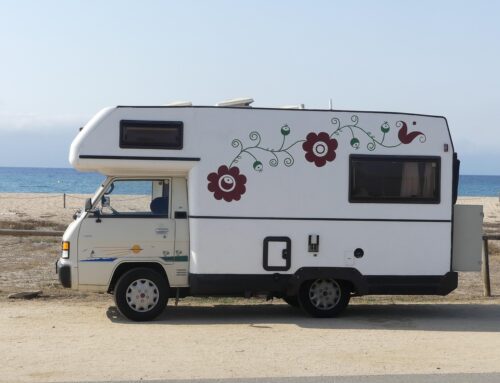September is National Preparedness Month, provides an opportunity to remind us that we all must prepare ourselves and our families now and throughout the year. This NPM will focus on planning, with an overarching theme: Disasters Happen. Prepare Now. Learn How
We all know to keep water, ready-to-eat food and similar basic necessities packed in an emergency supply kit—aka a “go bag”—in case a natural disaster or some other crisis forces us to leave home at a moment’s notice.
But in today’s world, smartphones and tablets have a number of features and options that help you make sure your family will be safe and prepared. Today, let’s talk about a few apps, and a few things that you will need in order to prepare your digital “go-bag.”
Apps for Your Digital Go Bag
To stay safe, take some time—before you need them—to download the apps that are most appropriate for your family. Below are three excellent disaster apps that are free of charge and can be used on both Apple and Android phones and devices…
For convenience: Put several apps into a folder (named “disaster” or something similar).
The following apps require Wi-Fi or cell service…
• American Red Cross is a good all-in-one app that offers 35 different alerts for severe weather (including hurricanes, winter storms and earthquakes) and a map to open Red Cross shelters. You receive text alerts when severe weather is predicted. With this app, you can monitor these conditions in your own area plus the locations of your loved ones. Great feature: With “Family Safe,” you can use this app to tell loved ones that an alert has been issued in their area and check to be sure they are safe.
• ReUnite allows the public to report missing and/or found people after a large-scale disaster. Great feature: This app allows you to upload photos and a physical description of a missing loved one to help disaster relief personnel find that person after an emergency.
• Federal Emergency Management Agency gives tips on what to do before, during and after more than 20 types of disasters, as well as the locations of open shelters and disaster recovery centers in your area, which offer crucial services during floods, earthquakes and other natural disasters. Great feature: This app’s “Disaster Reporter” allows you to upload photos of damage and recovery efforts in your area.
Documents for Your Digital Go Bag
It’s important to remember that paper documents can be destroyed in the event of a disaster, so taking a few minutes to scan these documents into digital form is a great idea. If you don’t have a scanner, you can use your smartphone to create scans, or head down to your local office supply business. Typically they will have a scanner that can be used for a very small fee.
The list of documents and records you will want to have is long, but will be invaluable after you have evacuated your home. You will need access to some of these items sooner than others, but all are important enough to include in your “must have” list:
- Vital Records: Driver’s licenses, birth certificates, adoption papers, Social Security cards, passports, citizenship papers (such as a “green card” or naturalization documents), marriage license, divorce decrees, child custody papers, current military ID, military discharge (DD Form 214), medical and vaccination records for pets along with current photos and ID chip numbers in case you are separated.
- Insurance Policies: Homeowners, renters, flood, earthquake, auto, life, health, disability, long-term care; have at least the policy number and insurance company contact information for each type of coverage.
- Property Records: Real estate deeds of trust and mortgage documents (at least the two-page settlement statement provided by the title company showing the actual cost of the house and purchase expenses); rental agreement or lease; auto/boat/RV registration and titles; video, photos or a list of household inventory.
- Medical Information: Immunization and other medical records, prescription information (drug name and dosage), health insurance identification cards, physician names and phone numbers, powers-of-attorney for health care, and living wills.
- Estate planning documents: Wills, trusts, funeral instructions, powers-of-attorney, attorney names and phone numbers.
- Financial records: First two pages of your previous year’s federal and state tax returns, stock and bond certificates, investment records, brokerage and retirement account information, credit card, checking and savings account numbers, contact information for credit unions, banks, financial institutions, credit card companies and financial advisers.
- Other: Personal address book, a letter with instructions for family or friends (for use in a situation where you’re not present), backups of important computer files, a list of usernames and passwords for online accounts, a key to your safe deposit box, a recent photograph, fingerprints and dental records for each member of the household (some police stations and nonprofits fingerprint children free);, account and contact information for utilities and other services (you may have to provide a new billing address or cancel certain services), a list of important documents and where originals and copies are located.
Those who don’t have the time or ability to gather all of these documents should focus on the most important and most difficult to replace.
With Hurricane Season already in full swing, it’s important to take the time to prepare now, while you still can. Once you add these items and strategies, you’ll have them in place year after year.
Stay safe out there!









